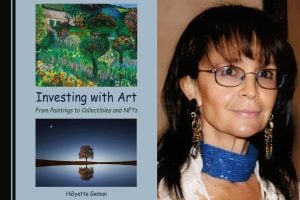
Hélyette Geman, a research professor in the Whiting School of Engineering’s Department of Applied Mathematics and Statistics and a renowned expert in quantitative finance, has published Investing with Art: From Paintings to Collectibles and NFTs, which explores art’s evolving economic, cultural, and personal dimensions. The book was released by Cambridge Scholars Publishing in August.
Recognized as the International Association of Quantitative Finance’s Financial Engineer of the Year in 2022, Geman, an expert on commodities, has authored three other books: Commodities and Commodity Derivatives: Modeling and Pricing for Agriculturals, Metals and Energy (2006); Insurance, Weather and Electricity Derivatives (1999); and Agricultural Finance: From Crops to Land, Water and Infrastructure (2016).
Now, drawing inspiration from her lifelong passion for art and museums and its intersection with the financial world, she is venturing into new territory: art as an asset that is as tangible as oil, gas, and other commodities—but with cultural and emotional implications.
Unlike traditional books on investing, Investing with Art: From Paintings to Collectibles and NFTs isn’t about strategies to make money by trading paintings, she said.
“It’s about investing with art—finding joy and passion in the pieces you surround yourself with,” Geman said.
The book explores topics such as:
- The rise of female artists and painters from underrepresented regions.
- The impact of the COVID-19 pandemic on art production and consumption, drawing parallels to historical crises like the Spanish flu.
- The growing importance of digital innovations such as blockchain, cryptocurrencies, and NFTs in the art market.
- Ethical questions around art replication, forgery, and the return of looted artifacts to their countries of origin.
But Geman says that her book doesn’t simply reflect on art history; it also poses questions relevant to an increasingly technical world.
“Is the aesthetic yield lower when looking at replicas versus original pieces and why? Can art be taught in the same structured way as finance? What does art ownership mean in an era of digital creation and AI-generated works? My hope is that these questions form the backbone of Investing with Art: From Paintings to Collectibles and NFTs, encouraging readers to think critically about art’s evolving role in society,” she said.